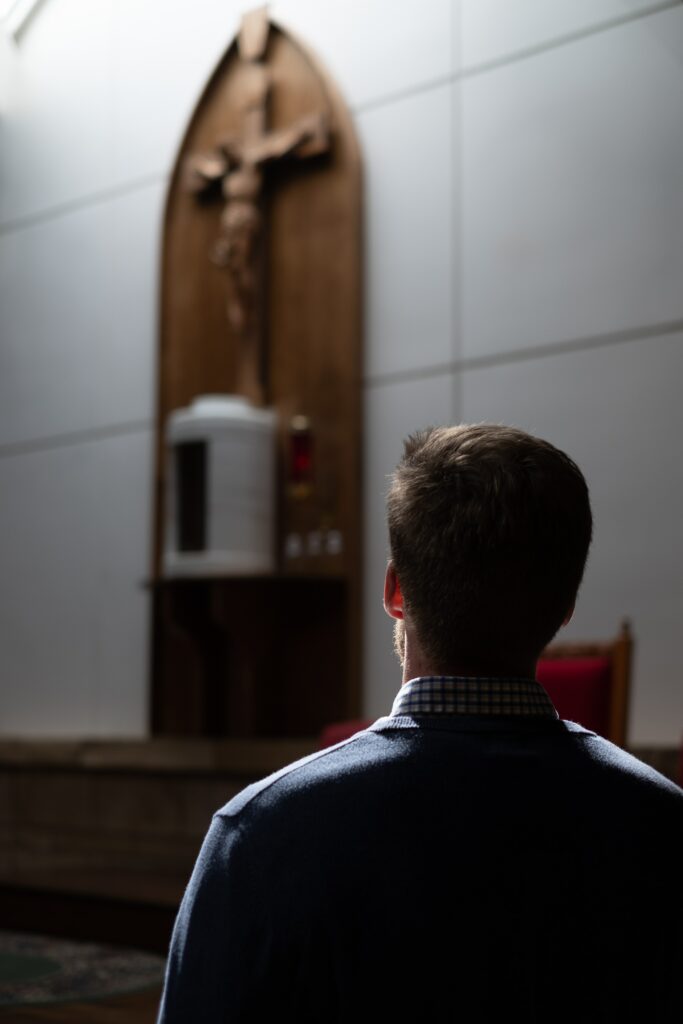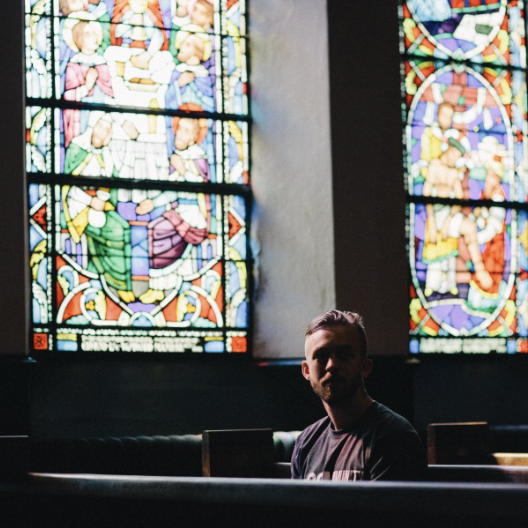Most of us don’t remember the days of television when there were only a handful of options.
Well, it’s becoming increasingly difficult to remember the days when there were only a handful of social media options.
Social media has completely changed the way we interact, stay connected, and receive our daily dose of information. The social media landscape doesn’t sit still—it’s evolving constantly.
Now, another major transformation is underway: social media is breaking up into hundreds of channels, sort of like how cable interrupted the grip of the original TV networks in America. No longer only YouTube, Facebook, or LinkedIn, social media is following the preferences of audiences, and the effects are felt by all society, including religious institutions like the Church.
What’s the reason for this intriguing shift? What is its impact on our lives? Will the largest channels continue to dominate, even reclaim lost ground? Or will the splintering of communities and the creation of new ones continue inevitably?
Let’s take a closer look at echo chambers and explore the potential positive and negative effects that could arise from this transformation. Moreover, we’ll ponder whether it might offer a solution to the feelings of isolation and overwhelm that often accompany traditional social media.


I. Private Networks and the Church
A quick Google search of social networks will generate a list of hundreds of communities gathering around geographical neighborhoods, dating, cooking, movies, fitness, faith, and much more. In a way, the use of social media from the beginning signaled this was coming.
Human nature is social. We need companionship and friendship. And it’s impossible to be with everybody and talk about everything all the time. So we naturally form small communities and close circles of varying degrees.
We had our friends early on Facebook and Twitter. We gathered in communities on Reddit and crafted personal spaces on Pinterest. We like to share our interests and beliefs with other like-minded individuals.
The difference today is that instead of just carving out spaces in the vast Meta or Google landscape, we are creating entire networks SOLELY devoted to that one thing.
The rise of these niche networks, often times private or requiring an invite or admin approval, presents opportunities and challenges for the Church.
These platforms provide a more intimate space for community building. They are much more engaged because of their inherent focus on a niche audience. The Church can foster closer connections within these networks if it can authentically tap into the core of that network, such as conservatives on Truth Social, artists on Behance, or moms on Cafemom.
By moving away from the crowded public platforms, the Church can engage in more meaningful interactions and cultivate a stronger sense of belonging among their followers.


II. Echo Chambers and Polarization
One risk, and a substantial one, that comes with social media fragmentation is the formation of echo chambers. There is great evidence that social media, specifically echo chambers, have accelerated the polarization in America, grouping people into dangerous ideologies defined by identity politics.
When we are exposed only to ideas and opinions that align with our existing beliefs, it can reinforce our preconceptions and lead to an exclusion of any view with even minor divergence. The Church is not spared this. Divisions within the Church have deepened as well, in part due to Catholics subscribing to echo chambers within large networks or in small networks, like SP3RN.
Fragmenting into communities built around shared hobbies, thoughts, and lifestyles can be very enriching, but fragmenting into ever shrinking echo chambers is unhealthy.
We are called to be IN the world, not OF it. The Church and Catholics need to engage social media, not with the goal of echo chambers, but with the goal of bringing Christ to every variety of audience.
III. The Positive Side of Fragmentation
While the fragmentation of social media can exacerbate societal divisions, creating isolated pockets of people who interact exclusively with like-minded individuals, it can also strengthen community in line with Pope Francis’ vision. It can be a meaningful use of the medium, rather than an addiction, a crutch for the pressures of life, or a replacement for real-world interactions.
“The image of the body and the members reminds us that the use of the social web is complementary to an encounter in the flesh that comes alive through the body, heart, eyes, gaze, breath of the other. If the Net is used as an extension or expectation of such an encounter, then the network concept is not betrayed and remains a resource for communion … If the Net becomes an opportunity to share stories and experiences of beauty or suffering that are physically distant from us, in order to pray together and together seek out the good to rediscover what unites us, then it is a resource.” – Message of His Holiness Pope Francis for the 53rd World Communications Day
These niche networks can help someone grow in a specific area, whether a skill, education, or even faith.
Signs of this in Facebook groups, Reddit communities, blog communities, and networks devoted to one interest in its entirety prove that audiences are much more engaged when they are among family and friends, much freer with likes, comments, and their own content uploads.
IV. An Antidote to Isolation
Social media, overall, has faced steep criticism over perpetuating feelings of isolation, jealousy, low self-esteem, and even violence. While it’s true that these platforms have their drawbacks, these drawbacks are not novel.
Throughout human history, the public square has fomented wisdom and chaos. The technology may be new, but it is still a simple extension of human behavior. It connects people. That’s good!
But if it connects the immature, the hateful, the ill-formed, then we cannot lay the full weight of blame at the feet of social media. Part of the blame rests on us, for ultimately it is we who must care for each other and not rely on technology to replace our vocation.
Social media is a tool. It can isolate and harm. But it can also broaden our horizons and enable interactions with diverse individuals. This is true for small and large networks.
But niche and private networks, often out of the mainstream’s attention span, have a unique environment—one that cultivates more intimate connections among like-minded individuals, usually away from advertising and large mixtures of interests.
A more controlled and supportive space may mitigate the negative psychological effects often associated with large “traditional” social media platforms like Meta, TikTok, and YouTube.
In a world where anonymity and trolling have become rampant, these small networks can create a safe haven for open and meaningful interactions.
This is dependent on whether the individuals who embody that network are willing to put aside selfishness, stubbornness, and self-righteousness. Fruitful interactions depend on those who interact, yet it can be argued that these very customized platforms are the best chance so far for bridging geographic and other barriers between people.
Another question looms that forces us to balance the success of these networks. We cannot rely solely on them. Social media cannot replace the real world. Think of what AI, VR, and the Metaverse propose. Nothing can replace flesh and blood, especially the Flesh and Blood of the Mass.
V. Social Media Will Always be a Tool for Good or Not
It is challenging for marketers, social media managers, and advertisers to keep up!
It is essential to view this shift as part of a broader pattern rather than an anomaly. Social media has always been, and likely will always be, in a state of flux, adapting to technological advancements and changing user preferences.
While niche and private networks might become a dominant trend, it is likely that further evolutions will follow.
Settling in is not an option. Evangelization requires constant vigilance, for it both leads humanity and follows it, going where behaviors and trends go, and leading it out of bad habits into good ones.
Conclusion
The Church has the opportunity to see the fragmenting of networks as a way of better understanding its audience. It makes it clearer where to find those who love sports, the outdoors, teaching, dancing, art, crafts, mechanics, technology, exploration, gaming, gardening, parents, pet owners, public servants, government employees, entrepreneurs, entertainers, religious communities, the unbelieving, and so much more.
We are all gathering in places we define, and those are targeting profiles. Through her countless ministries, the Church’s lay faithful, ordained, and religious can enter those communities, connect over shared interests, and begin to answer questions, ask questions, laugh, converse… connect… in truly meaningful ways.
The Church does not—should not—lob generalities and platitudes into the social ether, hoping someone will respond. It must be strategic, specific, and authentic. Christ, like the air we breathe, actually is for everyone. But how to bring Christ to everyone must go through very tailored avenues that never look the same.
However, it is crucial to address the potential risks, like echo chambers and reactionary polarization. Ultimately, the transformation of social media represents a turning point in our digital journey with the potential to reshape the way we interact and communicate for years to come.
And reshape the way we grow closer to or further from God.



